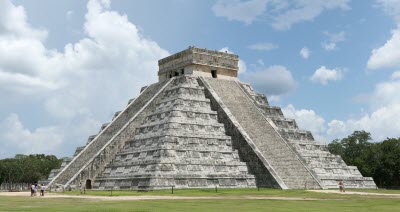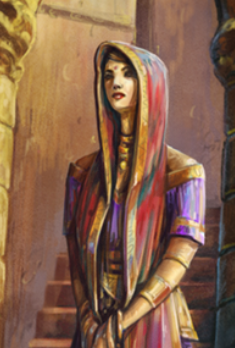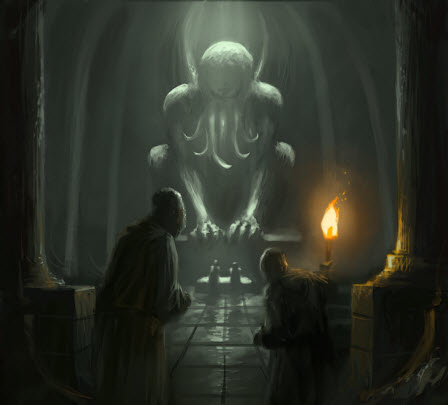As part of our May Spotlight on Ophir, we strive to inform readers of little extra tidbits surrounding the game. Games are made by people, and one of those tidbits we enjoy is learning a little bit more about the people behind them. Some designers shy away from the public stage, while others enjoy being front and center. In the case of designers Jason Kingsley and Charles Wright, they aren’t quite sure what to make of their newfound attention as a result of their inaugural game. Don’t worry though; they’ll learn. And we’re here to help.
The pick-up-and-deliver game of Ophir revolves around the all-important goal of building a massive Temple (of unknown purpose). This Temple grows by means of donations of precious metals like gold and silver, along with a number of other commodities that any transcendent and glorious temple might need. In return for these donations, you are rewarded with an even greater treasure: Victory Points. The more you donate, clearly the better of a person you become.
That’s pretty much how philanthropy works anyway.
Ultimately, whether players are doing all of this Temple building for prestige, piety, or trying to impress the princess is wholly irrelevant. All that matters is that the Temple be built, so that it too may join the ranks of the great monuments of the world or something.
That’s where you come in. We’ve stolen the Temple architects away for a few minutes from their busy schedule of building this structure to get some insight on how this great undertaking began – and where they feel it’s going. As we learned of their answers, we only find it fair to pass that knowledge on to you. Enjoy!
Round One Questions
CR: What was your Gateway Game?
Charles: The game formerly known as Settlers of Catan was the first modern strategy game I played, and the first one that my friends and I would stay up all night playing. My copy doesn’t get much action anymore, but I replay those memories from 2001 all the time!
Jason: For me, people drew me into the larger hobby more than any specific game. I grew up playing traditional card games as well as some of the classic abstracts (Chess, Backgammon, Cribbage) and mass market staples (Stratego, Risk, Monopoly). My family was actually living in Germany when Settlers of Catan was released, which became a favorite game in our family for years. And alongside the many memories of all those games, Axis and Allies also stands out as being a big influence. Seeing a game of that size and complexity amazed me as a kid.
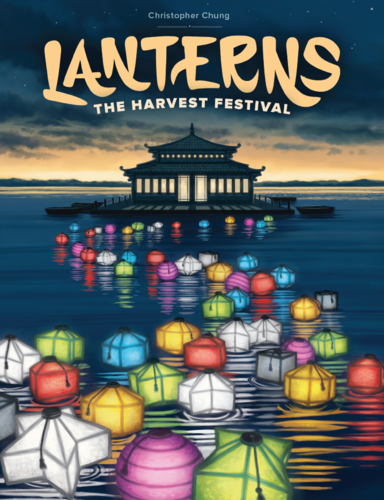 CR: What was the last game you really enjoyed playing (besides Ophir)?
CR: What was the last game you really enjoyed playing (besides Ophir)?
Jason: Do prototypes count? If so, my first taste of Scythe was a satisfying treat. But recent published games I’ve enjoyed include Bruges (with The City on the Zwin expansion), Roll for the Galaxy, and Lanterns: The Harvest Festival.
Charles: It’s hard to say. For an engine-building, intellectually-stimulating experience, Race for the Galaxy has been fun lately. For social interaction and deduction, it’s hard to beat Avalon. Eight of us played last month during TableTop Day!
CR: How big is your game collection?
Charles: BGG shows me with 71 games – and shrinking! So many in the collection are redundant, not all that fun, or just too hard to get to the table. I sell, trade, and give away games whenever I get the chance.
Jason: I have a small collection of light to medium weight games. At this point, it’s mostly comprised of titles I play with my wife and family or games that I’ve worked on as an artist or playtester. Anything else is usually accessible through my regular game group or at conventions. As my kids get older, though, I see our family growing our collection.
CR: What is your favorite type of game to play?
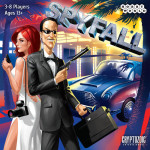 Jason: Euros are my generally my thing. I particularly enjoy elements of engine-building, economics, card drafting, and hand management. Low-luck, high-decision strategy games, as well as simple games with meaningful decisions (regardless of the luck factor), are usually the most satisfying experiences for me.
Jason: Euros are my generally my thing. I particularly enjoy elements of engine-building, economics, card drafting, and hand management. Low-luck, high-decision strategy games, as well as simple games with meaningful decisions (regardless of the luck factor), are usually the most satisfying experiences for me.
Charles: Social and interactive games. Resistance, One Night Ultimate Werewolf, Skull, Cosmic Encounter, and Two Rooms & A Boom are the most played games of my last two years. I’m really looking forward to Spyfall’s North American release.
CR: How do you feel about Monopoly?
Charles: Over it. I’ll play the app on a road trip if I can’t get the other passengers interested in Caylus! Just as long as I don’t have to read another article about the history of Monopoly or how atrocious the house rules are…
Jason: From what I can recall, the old version of Monopoly Jr. was pretty good…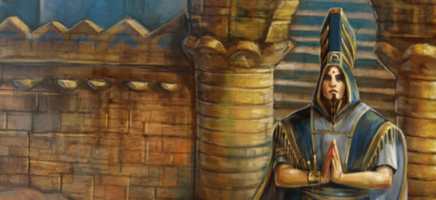
On Ophir
CR: Ophir is a pretty uncommon reference for a game setting. What was the inspiration for setting the game there?
Charles: I’ll have to defer to Jason on this one. Want to tell them about the dream?
Jason: The game began with this concept I was given in a dream of ships moving and interacting in a central area. This picture developed into the small, seven-hex board. Early on, Ophir just had a generic trading-and-light-combat-on-the-seas theme. Eventually, after teaming up with Charles, we discussed questions like, “What is the reason behind the goods being called this or that?”, “What’s the setting behind gathering and delivering gold?”, and “What atmosphere are we trying to create?”
We came across references to the “gold of Ophir”, and the rest started to fall into place from there. Ophir, we found, was an ancient port or region of immense prosperity, and its true location has disappeared from the history books. As a result, the name Ophir carries this Atlantean and El Dorado feel to it. The gold of Ophir is also connected to the construction of a great temple, which seemed to complete the backdrop of the story.
CR: The 3-D aspect of building the game’s temple is a central aspect to it. Was the intent to build it up an idea from the start or did it evolve over the course of development?
Charles: There was a 2-D temple for several months of development, but that all changed one fateful day around Christmas 2013. Justin and I happened to both be traveling to Texas for the holidays, so we met up to play and work on the game a couple times. My uncle and cousin were joining us for one of these playtests, when my uncle just blurted out how cool it would be to have a 3-D temple.
Now, this is a guy who has played maybe two modern board games. He has no concept of how expensive and superfluous such components would be. But you could see the wheels spinning in Justin’s mind immediately. He and [Terra Nova publisher] Robert worked tirelessly to bring about an excellent final product, and it’s clear that the temple took quite a bit of engineering and graphic layout prowess.
CR: The game comes with a fair amount of Specialists that provide players with unique abilities. Do you have a personal favorite?
Jason: I’m particularly fond of the Moneychanger and Chancellor. They can both provide a large amount of flexibility throughout the game. Their abilities aren’t as showy as some of the others, but that can also contribute to the element of surprise they have.
Charles: My favorite has not been released yet! But of the 8 (plus 2 promo) specialists in the Kickstarter version, my preference would be twofold. First, the Ambassador and its powerful, one-time starting bonus. This is good for new players who don’t want to have to think about a special ability mid-game. Second, the Harbormaster – if you can get favor, this specialist add tons of value and tactical decisions throughout the game.
CR: On that same thought, do you feel there are any Specialist combinations that make for particularly notable game experiences?
Charles: Certain alien combinations in Cosmic Encounters allow for all sorts of crazy possibilities in-game, and many are obvious just from reading the descriptions – ‘One time I played against Tick Tock, the Gambler, and the Dictator – can you imagine?!’ It’s one thing for Cosmic Encounters to have wild, powerful alien abilities, because there is enough player interaction and randomness to maintain balance in the game. I was hesitant to develop overly powerful specialists for fear that any imbalance would be more than the lesser interaction / luck of Ophir could balance out. The combination of specialist in Ophir is more subtle, as the abilities are less dramatic than alien races.
Jason: I’m not sure I’ve ever felt a game was the better or worse because certain specialists were or weren’t in the game. Each is unique and has a different feel depending on player count and setup. But with the inclusion of a team game variant (for 4 players), I could see some combinations coming up that players may really enjoy. In the end, I think it will largely depend on player experience and personal play style.
CR: Though you didn’t make your last stretch goal during the Kickstarter campaign, you went ahead with including wooden resource tokens anyway, which worked out great. Was there anything that didn’t make it into the game during the campaign that you wished had?
Charles: I am most grateful to TNG for biting the bullet on the wooden tokens. They are sweet! I love metal coins, so that would have been a nice touch.
Jason: My big request was portraits of each of the specialists. Getting those characters on cards brings so much life to the game for me, and the wooden components and 3D temple were the icing on the cake. I would never turn down metal coins, but there are enough options floating around now that it’s an easy add for players who want them!
CR: Terra Nova has done a couple Kickstarters to this point, but this was your inaugural game. What was the most surprising thing you learned about your first time through the crowdfunding gauntlet?
Charles: Timing. What time of year do you run your campaign? What conventions are happening before, during, after you are live? When do you get final art assets? When do you finish the rule book content? The rule book and other files for the printer? When, where, and what do you release on BGG? KS? Social media?
My answers to these and many other questions were different before going through it – and at that only as a designer, not as a publisher. We’ve learned many good lessons, and I’m glad to have been through it with TNG (Oh, and with Jason, of course).
CR: As it exists, Ophir is pretty concise game, but are there any aspirations of revisiting or expanding the land of Ophir down the line? It seems like a pretty prosperous region. Perhaps they’ll move on to building other things…
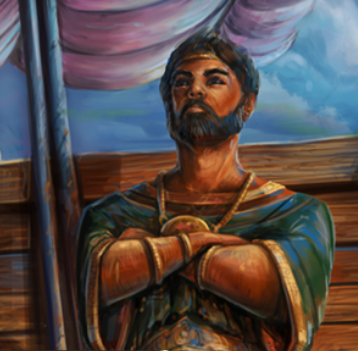 Jason: If there’s demand, we’ll aim to deliver! Up until now, my energy has been largely committed to finalizing the 2 vs 2 team game variant as well as the solo game variant. The ruleset for these will be released on BGG any day now, and I sincerely hope that they expand player’s enjoyment of the game.
Jason: If there’s demand, we’ll aim to deliver! Up until now, my energy has been largely committed to finalizing the 2 vs 2 team game variant as well as the solo game variant. The ruleset for these will be released on BGG any day now, and I sincerely hope that they expand player’s enjoyment of the game.
Charles: Sporadically over the last year I’ve toyed with a small expansion that would allow for a simpler, luck-free decision tree (besides the order of the market cards). The hope is that the streamlined play will broaden the appeal of Ophir to an even younger audience, while the resulting reduction of luck would appeal to the purists.
And yes, “building other things” is only natural! A large expansion would be the perfect place to implement some of the engine-building possibilities that weren’t a good fit for the base game.
CR: Lastly, we have to know: what kind of temple are we building in Ophir anyhow? It’s pretty vague in-game and we aren’t sure who – or what – we’ve been worshiping.
Charles: Indeed, it is vague! Maybe the temple is for an unknown god. Or maybe he doesn’t live in a physical temple after all…
[Jason appears visibly silence-bound to elaborate further.]
Ophir may be a prosperous place, but it isn’t entirely made of money (we think). The construction of its great Temple has proven to be a massive undertaking, and there are growing concerns that it may never be finished on time. As much as you wealthy and influential people have donated, it still isn’t enough yet to complete. Considering you’re one of those important people who are benefiting from the fancy PR and favors from Temple staff, it’s in your best interest to help get this thing completed and ensure your investment was worth it.
To help you along, we’re spearheading a friendly competition among Ophir’s movers and shakers like yourself. We’re holding a donation drive for all you gracious benefactors, and we’ve decided to raffle a copy of the game away to all who participate putting the capstone on this building.
This Temple can’t be finished without fine upstanding patrons like yourself. Won’t you help us, please?
Come help us Raise The Roof on Ophir’s Temple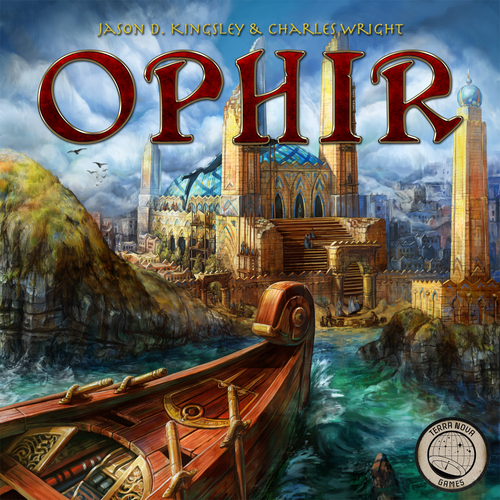
Photo Credits: Ophir cover and artwork by Terra Nova Games; Chichen Itza temple by Wikipedia; Cthulhu statue by Obrotowy.

